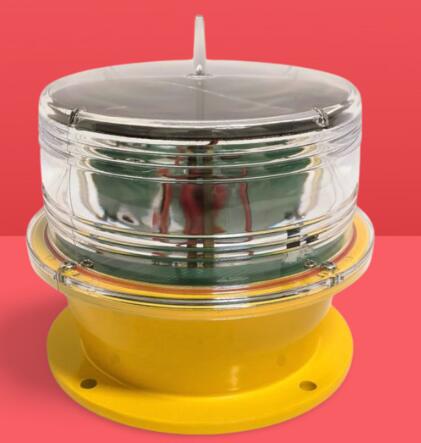L-810 Solar Powered Obstruction Light: The Future of Eco-Friendly Aviation Safety
As the aviation industry moves toward sustainable solutions, the L-810 solar powered obstruction light has emerged as a game-changer in marking hazardous structures. Combining FAA compliance with renewable energy efficiency, these lights provide reliable visibility for low-to-medium height obstacles while eliminating dependence on grid power. This article examines their technical specifications, benefits, installation best practices, and how they compare to traditional obstruction lighting systems.
Understanding the L-810 Obstruction Light Standard
The L-810 designation refers to a specific FAA-approved low-intensity obstruction light typically used for structures under 200 feet. When combined with solar power, it creates an autonomous lighting solution ideal for:
Telecommunication towers
Wind farms
Power transmission lines
Remote construction sites
Water towers and smokestacks

Key Technical Specifications
✔ Light Output: Red, steady-burning or flashing (30-60 fpm)
✔ Visibility Range: 1-3 nautical miles (depending on conditions)
✔ Power Source: Integrated solar panel with battery backup
✔ Weather Resistance: IP65 or higher for harsh environments
✔ Compliance: Meets FAA AC 150/5345-43H, ICAO Annex 14 standards
Advantages of Solar Powered L-810 Lights
1. Energy Independence
No electrical wiring required
| l 810 solar powered obstruction light |
Ideal for remote locations without grid access
Continuous operation during power outages
2. Reduced Environmental Impact
Zero carbon emissions
No trenching or cable installation needed
Lower long-term ecological footprint
3. Cost-Effective Maintenance
Fewer components than wired systems
Self-cleaning solar panels in newer models
| l 810 solar powered obstruction lights |
Long-life LED technology (50,000+ hours)
4. Quick Installation
No permits for electrical work required
Modular design allows for easy mounting
Can be relocated if needed
Installation Best Practices
1. Optimal Placement
Mount at highest point of obstruction
Ensure unobstructed sunlight exposure (minimum 4 hours/day)
Avoid shadows from nearby structures
2. Battery Considerations
Size battery capacity for 5+ days autonomy
Use lithium-ion for cold weather performance
Include battery status monitoring
3. Maintenance Protocols
Quarterly panel cleaning
Annual battery performance checks
Visual inspection after extreme weather
Comparing Solar vs Traditional L-810 Lights
Feature Solar L-810 Wired L-810
Power Source Solar + Battery Electrical Grid
Installation Cost Lower upfront Higher (trenching, permits)
Operating Cost Near zero Continuous utility expenses
Reliability Excellent (with proper sizing) Dependent on grid stability
Environmental Impact Minimal Higher carbon footprint
Mobility Easily relocated Fixed installation
Emerging Technological Improvements
Recent advancements are enhancing solar L-810 performance:
Smart Light Sensors
Automatic brightness adjustment based on ambient conditions
Motion-activated intensification for approaching aircraft
Hybrid Power Systems
Wind+solar combinations for cloudy regions
Emergency backup generators
IoT Connectivity
Remote performance monitoring
Predictive maintenance alerts
Theft prevention features
Improved Battery Tech
Graphene batteries with faster charging
Cold-weather optimized chemistries
Regulatory Compliance Worldwide
While the FAA sets the L-810 standard, international variations exist:
Europe (EASA): EN 303 415 certification
Canada (TC): TP 312 5th Edition
Australia (CASA): MOS Part 139
Middle East (GCAA): CAR Part VIII
Manufacturers must ensure lights meet regional requirements for flash patterns, intensity, and durability.
Case Study: Successful Deployment
A 2023 project in the Scottish Highlands installed 87 solar L-810 lights across wind farm sites. Results showed:
100% reliability during winter months
60% reduction in maintenance visits
Complete elimination of generator fuel costs
Full compliance with UK CAA regulations
Future Outlook
The solar L-810 market is projected to grow as:
Drone inspections reduce maintenance costs
Battery technology extends operation in polar regions
AI optimization improves energy efficiency
New materials enhance vandal resistance
The L-810 solar powered obstruction light represents the perfect synergy of aviation safety and sustainable technology. By offering reliable, compliant marking without grid dependence, these systems are becoming the preferred choice for obstacle lighting worldwide. As renewable energy technology continues advancing, solar aviation lights will play an increasingly vital role in global airspace safety while supporting environmental stewardship goals.
